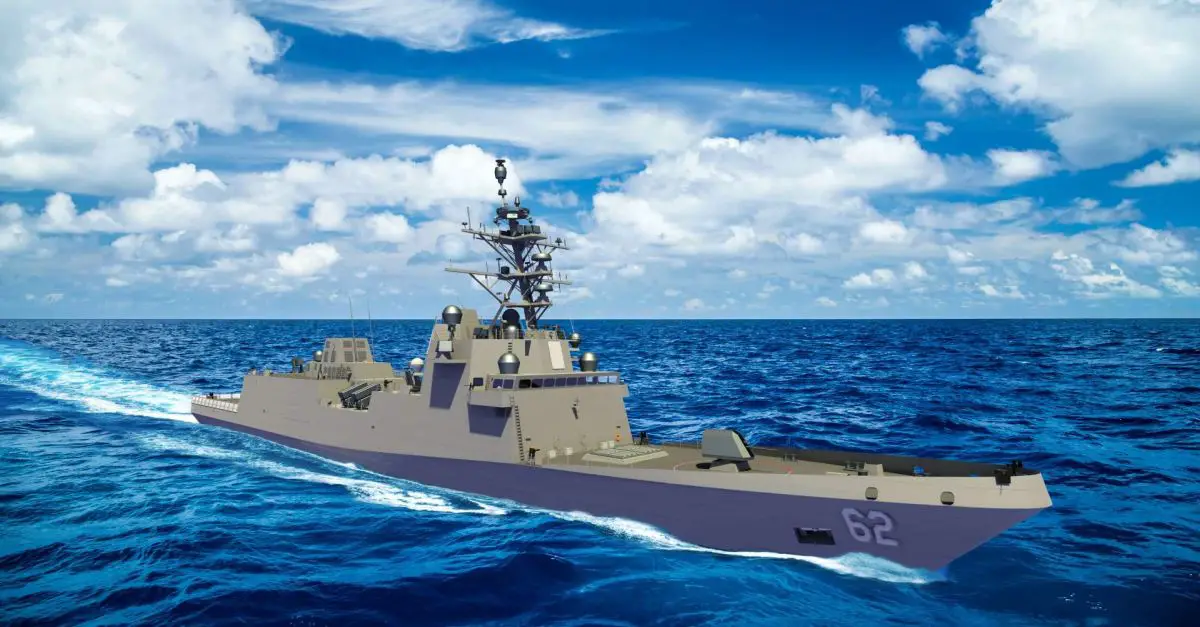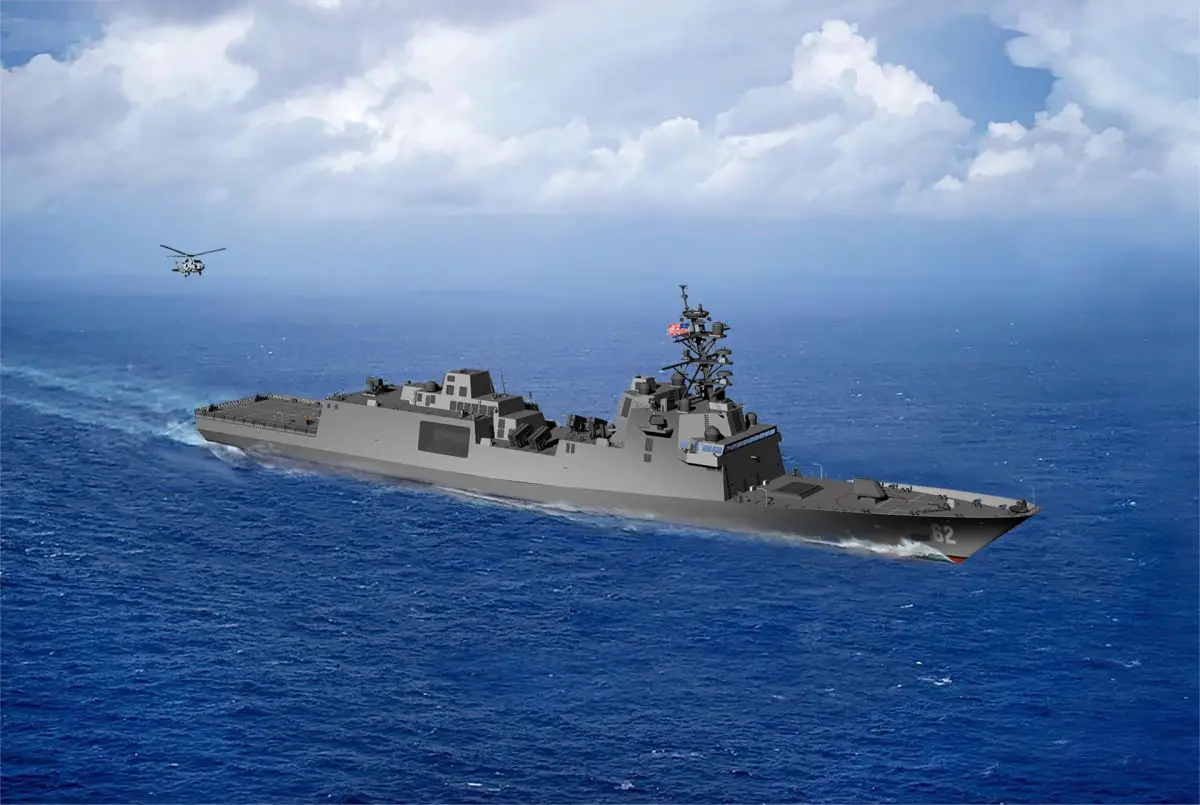Frigate.
Constellation class frigate FFGX FFG-62.

The Constellation-class frigate is the U.S. Navy's modern, multi-mission guided-missile frigate, designed to address the demands of 21st-century naval warfare. Developed by Fincantieri Marinette Marine, the Constellation-class combines advanced combat capabilities with a modular, cost-effective design. This class succeeds the Freedom and Independence classes of Littoral Combat Ships and revives the U.S. Navy's use of the FFG (frigate) hull code, last employed by the Oliver Hazard Perry-class frigates.
Country users : United States
Description
The Constellation-class represents a significant leap in naval combat capability, leveraging lessons learned from its predecessors and incorporating state-of-the-art systems to meet evolving threats. Based on the proven FREMM (Frégate Européenne Multi-Mission) design, it has been heavily customized to align with U.S. Navy requirements, including stealth enhancements, superior survivability, and comprehensive multi-domain warfare capabilities. The first ship in the class, USS Constellation (FFG-62), was procured in FY2020 and is under construction, with commissioning planned for 2029. As of now, 20 ships are planned, with 6 on order and 1 currently being built. Each subsequent vessel's construction cost is projected to range between $850 million and $950 million, with the first ship costing $1.281 billion due to developmental expenses. The lead ship, USS Constellation (FFG-62), began construction in 2024 and remains under construction as of now.
Technical Data
-
Weapon systems
The Constellation-class is outfitted with a 32-cell Mk 41 Vertical Launch System (VLS) that can deploy a range of munitions, including BGM-109 Tomahawk Cruise Missiles, RIM-162 ESSM Block 2, and RIM-66 Standard Missile-2 Block 3C. This allows it to engage surface, air, and land-based threats. In addition, the frigate features 16 canister-launched over-the-horizon Naval Strike Missiles (NSM) for long-range anti-ship warfare. The Mk 110 57mm naval gun provides a rapid-fire capability against aerial and surface targets, and its compatibility with the Advanced Low Cost Munition Ordnance (ALaMO) system adds precision to its firepower. For point defense, it employs a RIM-116 Rolling Airframe Missile (RAM) launcher. Secondary armaments include various M240 or M2 machine guns, ensuring close-range defensive options in asymmetric warfare scenarios.
-
Engine and Propulsion
The frigate employs a Combined Diesel-Electric and Gas (CODLAG) propulsion system, featuring a General Electric LM2500+G4 gas turbine, 2 INDAR electric propulsion motors generating 3.4 MW each, and 4 Rolls-Royce MTU 20V 4000 M53B diesel generators for a combined output of 12 MW. This system powers 2 fixed-pitch propellers and an auxiliary hydraulic retractable thruster for enhanced maneuverability. The propulsion configuration enables speeds exceeding 26 knots (48 km/h) and a range of 6,000 nautical miles at 16 knots on electric drive, making it ideal for long-range patrols and sustained operations.
-
On-board equipment
The Aegis Baseline 10 Combat System forms the backbone of the frigate's combat management capabilities, integrating sensors, weapons, and communications systems for situational awareness and threat engagement. The primary radar is the AN/SPY-6(V)3 Enterprise Air Surveillance Radar (EASR), which provides advanced multi-target tracking and engagement. The AN/SPS-73(V)18 Next Generation Surface Search Radar enhances maritime navigation and surface threat detection. Undersea warfare capabilities are bolstered by the AN/SQQ-89(V)16 system, which includes the Thales CAPTAS-4 Low Frequency Variable Depth Sonar and TB-37 Multi-Function Towed Array. These systems enable effective anti-submarine warfare operations. Electronic warfare and countermeasures are supported by the AN/SLQ-32(V)6 electronic warfare suite, 4 Mk 53 Nulka decoy launchers, and the AN/SLQ-61 Lightweight Tow Torpedo Defense Mission Module, providing multi-layered defense against missile and torpedo threats.
-
Design and Main Features of Vessels
The Constellation-class prioritizes stealth, survivability, and flexibility in its design. Its reduced radar cross-section and acoustic signature provide a tactical advantage in hostile environments. Built with an emphasis on durability, the hull and superstructure utilize advanced materials for strength and reduced maintenance. The frigate is equipped with aviation facilities including an extra-large hangar and flight deck capable of supporting an MH-60R Seahawk helicopter and an MQ-8C Firescout UAV simultaneously. The hangar integrates the RAST Secure & Traverse Aircraft Handling System for efficient operations, while systems like the Night Vision Device Compatibility and Horizontal Reference System enhance its aviation support capabilities.

Artist rendering of the future Constellation-class frigate USS Constellation FFG-62.
Specifications
-
Armament
32 Mark 41 VLS cells with: BGM-109 Tomahawk Cruise Missile, 16 × canister-launched over-the-horizon anti-ship weapons, RIM-116 Rolling Airframe Missile launched from Mk 49 Guided Missile Launching System (21 cell), Mk 110 57 mm gun, Various machine guns M240 or M2
-
Country users
United States
-
Designer Country
United States
-
Aircraft carrier
1 × MH-60R Seahawk helicopter, MQ-8C Firescout
-
Crew
24 officers and 176 enlisted crew
-
Engines
CODLAG General Electric LM2500+G4 gas turbine, 2 × electric propulsion motors, 4 × ship service diesel generators Rolls-Royce MTU 20V 4000 M53B engine 3000 kW for a total output of 12 MW, 2 x fixed-pitch propellers, auxiliary propulsion unit Thrustmasters of Texas Hydrologic Retractable Thruster
-
Displacement
7,291 tons, fully loaded
-
Speed
in excess of 26 kn (48 km/h; 30 mph)
-
Range
6,000 nmi (11,000 km; 6,900 mi) at 16 kn (30 km/h; 18 mph), electric drive
-
Dimensions
Length: 496 ft (151.18 m); Beam: 65 ft (19.81 m); Height: 1.87 m






































